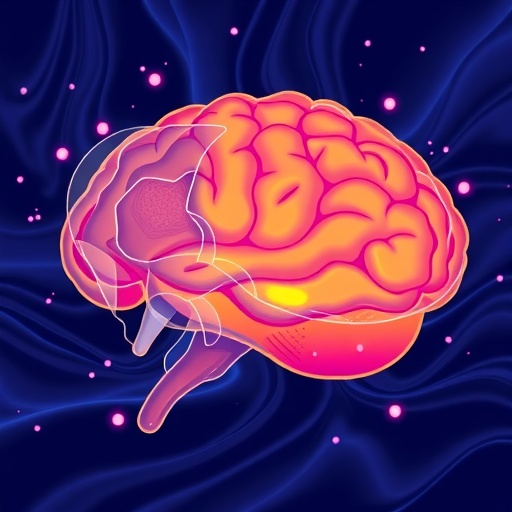In a groundbreaking study set to reshape our understanding of the interplay between sleep deprivation and cognitive performance, researchers have unveiled a complex and vital link between attentional lapses and the synchronized dynamics of neurovascular activity, pupil behavior, and cerebrospinal fluid (CSF) flow. This landmark research, recently published in Nature Neuroscience, dives deep into the physiological underpinnings of how the brain responds to the lack of sleep, and how this culminates in fleeting, yet critical, failures of attention that can have profound consequences in everyday life.
Sleep deprivation is notoriously known to impair cognitive functions, ranging from memory retention to executive control. However, the precise neural mechanisms that precipitate these breakdowns have long eluded scientists. Previous studies have primarily focused on isolated aspects such as neuronal firing rates or changes in blood flow within the brain. What this new research reveals is that attentional failures are not simply the result of individual deficits but emerge from a finely-tuned, yet fragile, orchestration of neurovascular, autonomic, and CSF flow systems.
The authors utilized cutting-edge imaging and physiological monitoring techniques simultaneously, enabling a multimodal examination of the brain’s state during prolonged wakefulness. They monitored fluctuations in cerebral blood flow, pupil diameter, and CSF dynamics to assess their temporal and functional congruity. This approach was inspired by the growing recognition that brain health and cognitive function are intimately tied to the integrated activity across these disparate biological systems, which together regulate brain homeostasis and information processing capacity.
One of the most compelling findings in the study is the discovery of a tightly coupled triad: neurovascular signals, pupil dynamics, and CSF flow variations synchronize during moments immediately preceding attentional lapses in sleep-deprived individuals. This synchronization forms a biomarker-like event, heralding the impending failure of sustained attention. The implication here is profound; the brain’s vascular system, pupil response mechanisms, and even the flow of CSF—a cerebral “waste clearance” fluid—are not separate players but act in concert to influence cognitive resilience or vulnerability under sleep deficit conditions.
From a physiological standpoint, these results underscore the importance of neurovascular coupling—the process by which neuronal activity modulates blood flow—and how its disruption can affect cognitive functions. The pupil dynamics add another layer of insight, as pupil size is known to reflect locus coeruleus activity, a brainstem nucleus critical for arousal and attention. The CSF dynamics, previously overlooked in cognitive studies, now emerge as a crucial variable, potentially involved in clearing metabolic byproducts that accumulate during wakefulness, thus influencing neuronal excitability and functional integrity.
The temporal precision with which these signals align offers innovative opportunities for predictive modeling. Real-time monitoring of pupil diameter and cerebral blood flow could serve as practical proxies for impending attentional lapses, enabling the development of alert systems in high-risk environments such as transportation, healthcare, and military operations. Such applications could revolutionize how we mitigate the risks associated with sleep deprivation, promoting both safety and performance optimization.
Beyond applied implications, this integrated perspective challenges existing neurophysiological frameworks by positioning fluid dynamics and vascular function as active elements in cognitive processes rather than passive background players. The dynamic interplay suggests that brain states, especially those impaired by sleep loss, cannot be fully understood without considering how blood and CSF flow modulate neuronal communication and neural network stability.
Technological advancements were pivotal for this research’s success. Advanced neuroimaging modalities capable of capturing hemodynamic responses in tandem with precise pupillometry and CSF flow measurements allowed the researchers to observe the brain’s internal milieu with unprecedented clarity. This multilayered approach overcomes the limitations of prior investigations, which often treated neuronal, vascular, and autonomic systems as isolated domains rather than integrally connected networks.
The multidisciplinary collaboration driving this research reflects an evolving trend in neuroscience, where cross-talk between vascular biology, neurophysiology, and computational modeling yields richer insights into brain function. Sleep researchers, cognitive scientists, and engineers alike contributed to analyzing and interpreting the massive datasets generated, ensuring a robust and holistic understanding of the phenomena at play.
Importantly, the study also sparks novel hypotheses about therapeutic interventions aimed at ameliorating the cognitive detriments caused by sleep deprivation. If attentional failures are indeed tethered to disrupted neurovascular and CSF dynamics, strategies enhancing cerebral blood flow or modulating pupil-linked arousal pathways could restore or prolong cognitive function during sleep loss. Exploring pharmacological or behavioral methods to stabilize these physiological systems opens a promising frontier for clinical research.
Furthermore, the research invites deeper exploration of how chronic sleep disorders, not just acute deprivation, may alter these critical brain dynamics. Understanding whether sustained disruptions in neurovascular and CSF function contribute to long-term cognitive decline or neurodegeneration could provide vital clues in combating diseases like Alzheimer’s, which are associated with both sleep disturbances and vascular deficits.
This integrative framework also propels the concept of the brain as a fluid-dynamic organ, where physical forces and fluid movement are as essential as electrical and chemical signaling. Such a paradigm shift encourages the development of new models that represent brain function in terms of coupled biological oscillators, potentially yielding more accurate predictions of cognitive states and failures.
The visualization in the published figure highlights the cyclical nature of these physiological signals, showing how synchronized fluctuations in pupil size, cerebral blood flow, and CSF movement align with perforations in attentional control. The empirical data plotted against time reveal repeating patterns that provide a temporal roadmap to understanding how sleep deprivation impacts cognitive stability at a mechanistic level.
In sum, the study by Yang, Williams, Beldzik, and colleagues advances a new frontier by intricately linking neurovascular, pupil, and CSF dynamics to real-time attentional failures induced by sleep deprivation. Their findings illuminate the deep physiological roots of cognitive vulnerability during extended wakefulness, providing a scaffold for future innovations in monitoring, predicting, and ultimately mitigating the detrimental effects of sleep loss on human performance.
As science continues to unravel the complex bioelectrical, vascular, and fluidic choreography within the brain, this research stands as a paradigm of how integrative approaches can transform our understanding of fundamental cognitive phenomena. It opens the door for novel diagnostic and therapeutic strategies that transcend traditional neuroscience boundaries, underscoring the critical role of sleep in maintaining the delicate balance of life-sustaining brain functions.
The implications extend beyond the laboratory, touching on societal challenges such as workplace safety, mental health, and overall well-being in an increasingly sleep-deprived world. Recognizing the biological signatures of attentional lapses offers a new vantage point, where technology and biology intersect to foster resilience in the face of one of humanity’s most pervasive cognitive threats—lack of sleep.
Subject of Research: Sleep deprivation effects on attention through joint neurovascular, pupil, and cerebrospinal fluid flow dynamics.
Article Title: Attentional failures after sleep deprivation are locked to joint neurovascular, pupil and cerebrospinal fluid flow dynamics.
Article References:
Yang, Z., Williams, S.D., Beldzik, E. et al. Attentional failures after sleep deprivation are locked to joint neurovascular, pupil and cerebrospinal fluid flow dynamics. Nat Neurosci (2025). https://doi.org/10.1038/s41593-025-02098-8
Image Credits: AI Generated
Tags: attentional lapses and brain dynamicsautonomic responses to sleep deprivationcerebrospinal fluid flow and brain functionconsequences of sleep deprivation on daily lifeexecutive control and memory retentionimaging techniques in neuroscience researchmultimodal examination of brain activityNature Neuroscience groundbreaking studyneurovascular activity and attentionphysiological mechanisms of sleep losspupil behavior and cognitive declinesleep deprivation effects on cognitive performance






